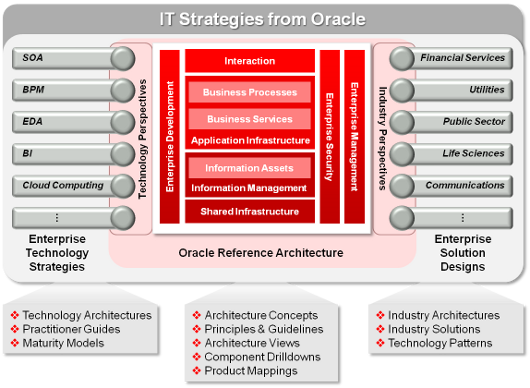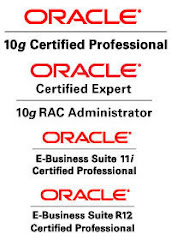‘COLLABORATE 12: Technology and Applications Forum for the Oracle Community’ is de grootste Oracle gebruikersgroep conferentie ter wereld en wordt jaarlijks georganiseerd in de Verenigde Staten. Het is hét evenement om bij te zijn wanneer je geïnteresseerd bent niet alleen in Oracle Applications (E-Business Suite, JD Edwards, Siebel, etc.) maar ook in Oracle Technologie in het algemeen, van ontwikkeling tot beheer. Duidelijke aanwezigheid van Oracle geeft ook aan dat Oracle zelf veel waarde hecht aan deze conferentie. Ook dit jaar zal een aantal Nederlandse Oracle experts een presentatie geven op deze conferentie: Roel Hartman (Logica), Alex Nuijten (AMIS), Arian Stijf (Arven) en Arnoud Roth (Inter Access). Aangezien niet iedereen naar Las Vegas kan om deze conferentie bij te wonen, wordt er door Inter Access een Dutch Preview Event georganiseerd op woensdag 18 april vanaf 17 uur op het kantoor van Inter Access te Hilversum, waar alle presentaties van deze experts zullen worden getoond. Van Application Development, E-Business Suite Security, SOA tot Oracle Fusion Applications, de onderwerpen zijn zo divers dat je zeker een interessante avond zult beleven.
Nodig gerust geïnteresseerden uit jouw netwerk uit om mee te komen!
Wil je deelnemen aan dit event? stuur een mail naar
info@interaccess.nl.
Kijk ook op
LinkedIn en geef aan dat je komt!
Hieronder het programma van sprekers en presentaties:
Alex Nuijten, AMIS
Solving Puzzles with SQL: Cheating when playing the game SET
Set is a card game which is fun to play while exercising your mind. In this session you will learn about the SET game, as well as how you can leverage SQL to solve it really quickly.
Learn advanced features of SQL, such as Subquery Factoring and ANSI join syntax while we’re cheating in the game of SET.
Who’s Afraid of Analytic Functions
“I never had the need for Analytic Functions”, is one of the phrases that is heard quite often. Maybe that’s true, maybe it isn’t. Recognizing the need for a particular feature can only occur when you have enough exposure to the feature. In this presentation a number of real life examples will be covered which will show the power of Analytic Functions and the ease of solving the challenge at hand.
You can learn the syntax from the Oracle Documentation, but you will learn to recognize “the need for them” by real life examples.
Database Development: SQL Holmes – The Case of the Missing Performance
During this presentation, a case study is unfolded to reveal the true cause of a slow performing query. Did the database just “have a bad day”? Was the evil DBA to blame? The PL/SQL developer who didn’t get enough coffee? Or was it the application sending the “wrong” query in the first place?
In this classic “whodunnit” you will take a tour past the crime scene. Investigate the query, use the tools of the trade and collect all the relevant information. Follow the trail to uncover the truth and nothing but the truth…
Roel Hartman, Logica
5 Cool Things You Can Do With HTML5
There is a buzz going around about HTML5. What is it exactly? And can we use it now? What are the benefits in an APEX environment?
This presentation will answer these questions and contain some nice demo’s using the new HTML5 features.
APEX Boot Camp: Striving for Perfection: The Ultimate APEX Architecture
APEX supports a flexible architecture. That means that there are multiple ways of solving problems like: separation of data and logic, security issues, re-use, including javascript and CSS, etc. etc.
In this session I’ll give the pro’s and cons of each available option. As this is aimed to be an interactive session, the attendees are encouraged to put forward their own ideas – and concerns. So, maybe, in the end, we’ll reach the “Ultimate APEX Application Architecture”!
Done in 60 Seconds – Creating Web 2.0 Applications Made Easy
This is a two-part session. Dynamic Actions is the most striking new feature of APEX 4. In this session you will learn how to using this new feature will speed up the development of your Web 2.0 enabled APEX applications tremendously.
And of course the main part of this presentation will be live demo
Arian Stijf, Arven
Securing the E-Business Suite. A Layered Approach
In this presentation we look at the features available on different levels of the technology stack, from the User Management in eBS down to the OS and network level. In this presentation we will present you with an overview of features available to secure your e-Business Suite. We discuss a holistic approach to securing your suite, by showing you the interaction between different security features. After the presentation you will be able to achieve the required level of security throughout the entire tech stack.
From Workflow to BPEL
In the (near) future Workflow will be replaced by BPEL. In this presentation we show how customers can prepare for the transition to BPEL. We look at the differences in technology and structure. An overview of the SOA architecture is given. We show how workflows can be 're-designed' in BPEL. There is special attention for developing new workflows that are easier to transfer to BPEL. Hands-on a number of workflows are redesigned in BPEL
Arnoud Roth, Inter Access
Oracle Fusion Applications Architecture Fundamentals
Oracle Fusion Applications offers the new standard for Business. It also offers a new standard for applications technology and applications architecture. For anyone interested in Oracle Fusion Applications, this is a fundamentals session to explain the technical architectural elements, component interaction and major technology features of Oracle’s newest enterprise application: Oracle Fusion Applications.



